As we work together to create meaningful items of clothing, a value we consistently practise at Crow is being sustainable. Truly sustainable work occurs when we create a social, economic and environmental situation where all sorts of communities can thrive together in harmony, whether it's us as humans, animals, or the nature that surrounds us. We want to conserve and maintain resources for as long as possible. Just as ‘sustainable development’ states, we want to satisfy the needs of our present clientele, without compromising resources for the upcoming generations.
What is Sustainable Fashion?
Sustainable fashion incorporates creating clothes through processes that are high in social and environmental integrity. The aim is to minimise any ecological damage that the process of creating clothes brings upon. Unfortunately, according to statistics, the clothing industry solely is responsible for 10% of the Earth’s carbon emission, every year!
This appalling percentage is a result of irresponsible production from clothing brands all around the world. Ignorance with regards to environmental impact builds up into this brunt percentage. However, to combat this, a vast majority of sustainable clothing brands have started fighting for sustainable fashion, through the ‘slow fashion movement’.
Crow is proud to be part of this movement, as a brand that produces clothes mindfully with regards to environmental ethics and our impressions on our surroundings. We have a greater vision respecting our resources, to create clothes that are comfortable and chic without compromising the environment.
How is Sustainable clothing created?
Clothing items that are sustainably created often incorporate fabric like hemp, organic and Pima cotton as these are fabrics that have a considerably lesser unfavourable impact on the environment. Many businesses that produce sustainably often have business models that are ‘eco-conscious’, that is, their decisions centre around the impact on the environment.
An example of this would be choosing the kind of energy they use. Most clothing factories that produce sustainably use renewable energy, thus generating no greenhouse gases. More aspects sustainable brands consider practising are producing locally, using recycled materials or extra waste fabric as packaging to minimise any waste created. This applies to all resources, whether its energy, water, fabric or others.
Why sustainable clothing is more expensive compared to fast fashion
A problem most sustainable creators face is sourcing. To find the correct fabric which is made ecologically, while also searching for factories that treat their workers right and ethically all lead to a higher price of production. Not only this, but Crow sources only the highest quality of fabrics used. These are more valuable, and thus more expensive to create an end product of a higher standard.
Why Sustainable fashion is important and its benefits:
1. Water control:
The usage of water for both drinking and agriculture is topping all-time highs. To combat this, sustainable fashion uses crops that require much less water, like organic cotton, which is said to use 91% less water as compared to conventional cotton.
2. Eliminate toxic chemicals:
Sustainable fashion is also about omitting toxic substances that affect both the buyer and the producer. These substances could be the pesticides used in farming, which are not used in organic farming methods, as preferred for sustainable clothing production. They harm the workers who have to use them, and the consumers who wear the clothing, from skin reactions to allergies.
Not only this, but sustainable fashion brands also use organic or naturally produced dyes, from plant extracts to eliminate any chemicals in the process. However, using natural dyes often present producers with a challenge, of how to create dyes that are natural yet have properties like wrinkle resistance and water repellency.
3. Create timeless pieces:
A feature of fast fashion is continuously changing trends and designs, influencing consumers to constantly alter their tastes according to fashion that is in favour. However, sustainable creators aim to fabricate clothing and styles that are timeless, leading to less regular purchases and a longer life span for their clothes.
4. Generate less waste:
Sustainable fashion is not just about being sustainable while producing clothes. People also practise sustainability by finding a way to create less waste with their owned items by finding creative ways to resume or repurpose them once they’ve run their course. Some choose to repair garments to make them wearable again or recycle fabrics for other purposes such as using an old canvas bag as shoe storage. Not only this, but some also choose to restyle their clothes by adding new dressy elements like an embroidered design or painting over them!
5. Sustainable agriculture:
Numerous sustainable clothing brands and socially conscious brands choose to use agricultural methods that are organic. These include growing crops of natural fibres like organic cotton, which has a much less environmental impact. For example, organic cotton saves water and excludes the use of any chemical.This leaves the soil clean and unharmed, as compared to the pollutive effects of conventional cotton. Moreover, organic farming methods also reduce the volume of greenhouse gases emitted in our atmosphere, slowing down global warming.
Why should we practise sustainability?
When society practises sustainability, it encourages the growth of more livable communities, considering every being from each class, consisting of healthy and well-paid workers to conscious buyers. These communities thrive together in a safer environment altogether. In addition, sustainable processes present economic benefits of lesser waste and increased human productivity and potential.
Below are some important attributes that can be used to identify what a sustainable society looks like.
- Everyone in society feels safe and happy with their urgent and domestic needs met.
- The environment we live in is acknowledged of its worth, and the damage to it is curtailed.
- A steady and growing economy, with numerous employment opportunities and lower inequality between classes.
- Energy is conserved by using renewable forms as a daily source of energy.
- Waste is diminished by recycling, reducing and reusing.
- Advocacy of locally produced cultivation and businesses.
- Capping pollution levels to those that do not sabotage the environment.

